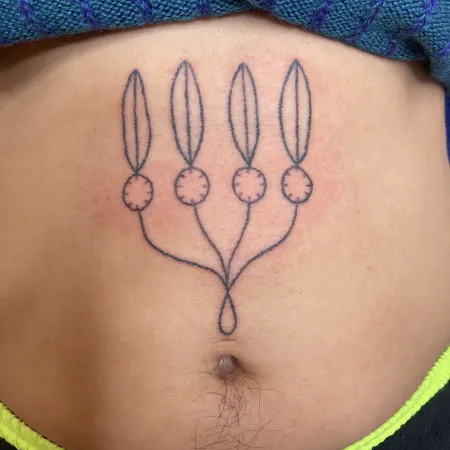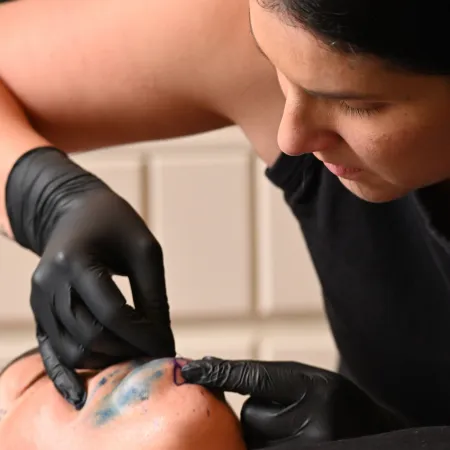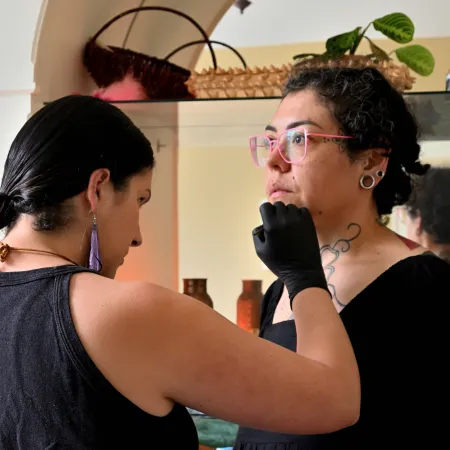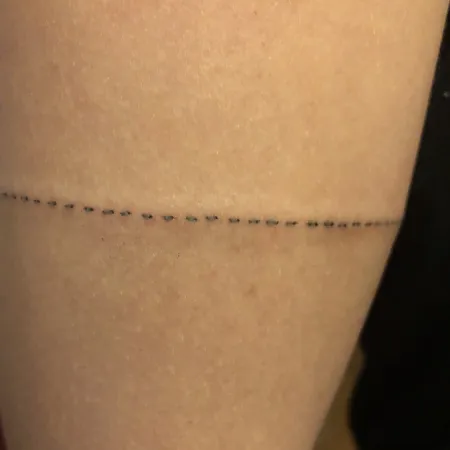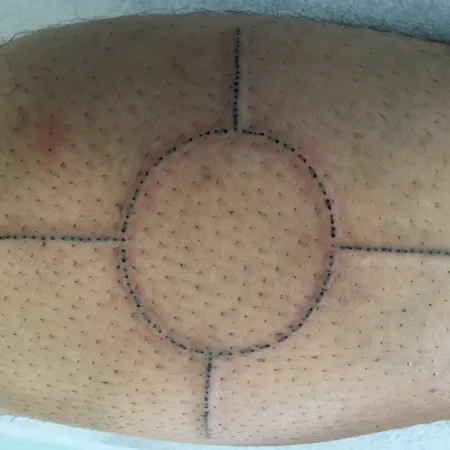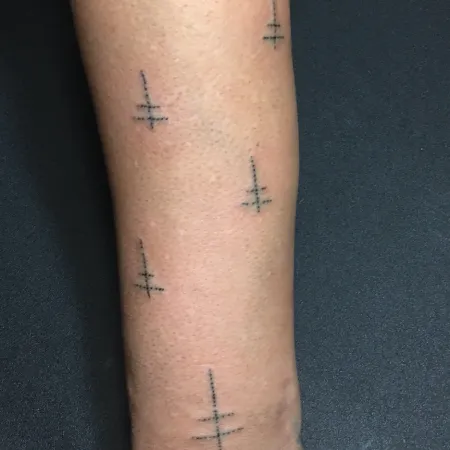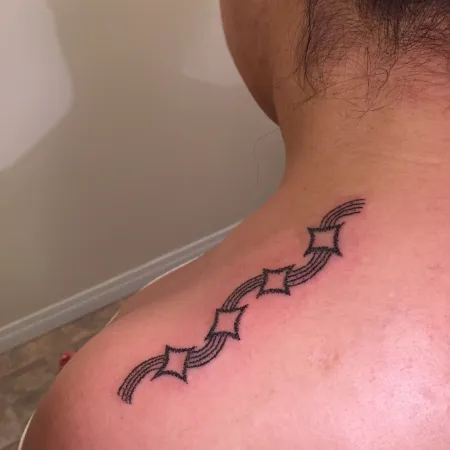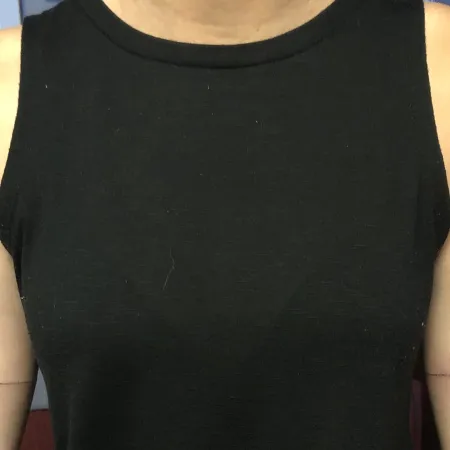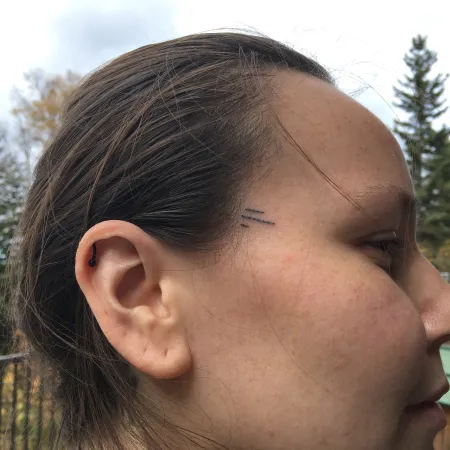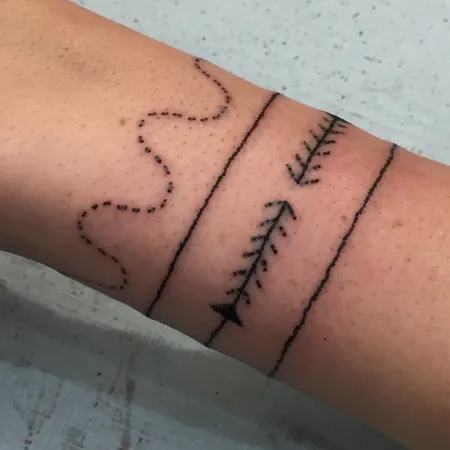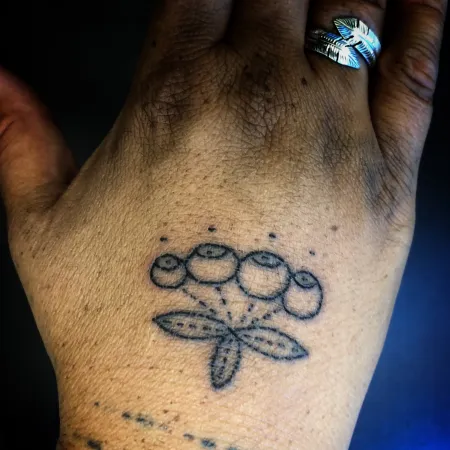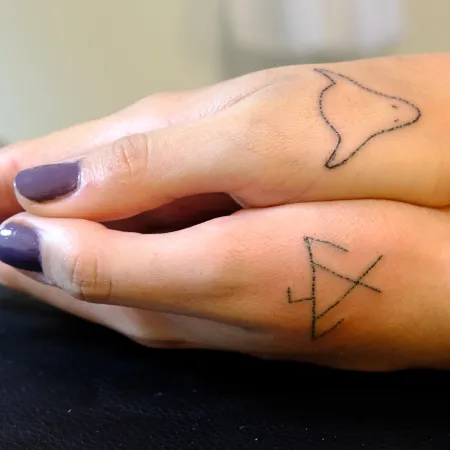Booking Inquiry Form
Amy offers skin-stitch and hand-poke tattoos at her private tattoo studio Red Willow and Rebar Art in Bedford, NS.
To book a tattoo please fill and submit a booking inquiry form. If your form is accepted, you will be contacted with a list of available dates to book your tattoo.
For more information please scroll through to the end of this page.
If you have any questions, please contact here.
Who can get a tattoo?
You must be 18 years of age or older. Amy's tattoos are for both Indigenous and Non-Indigenous people. She tattoos all nations. She will work with you to ensure that your tattoo either reflects your own ancestral/cultural background or is of her own design gifted from her to you.
If you recently underwent cancer treatment, our insurance requires a physician’s sign off prior to offering tattoo services.
How to book an appointment?
- Fill out a consultation form. Amy or her team will email you within a week to clarify and confirm all the details.
- Pay deposit and schedule. Once your deposit of $200 is received you will be provided options for booking a time for your tattoo. All deposits and payments made are non-refundable.
What is the cost?
The hourly rate is $200 an hour for most tattoos.
Very large tattoos are a day rate of $1000. Amy will work on your tattoo as long as you can sit for and with as many breaks as either of you need. The whole day is reserved for you and your tattoo. Once your consultation form is reviewed you will be provided with a quote.
A $200 non-refundable deposit if required to book.
Amy is only taking payment via e-transfer and cash at this time.
Amy is open to trade or gift. Please note this in your booking form.
How to prepare for an appointment?
- Please moisturize your skin 1-2 days prior to your appointment.
- If receiving skin-stitch tattoo, please exfoliate your skin 2-3 days before your appointment.
- Avoid alcohol or any blood thinning medications
- Stay hydrated
- Eat before your appointment or bring snacks, treats, and something to drink as it will help in case of experiencing low blood sugar.
- Wear comfortable clothes that you won’t mind getting potentially stained
What is your approach to Health and Safety?
Amy’s studio, Red Willow and Rebar Art, is permitted as a Body Art Facility under the Safe Body Art Regulations of Nova Scotia. Health and Safety is the first and foremost concern when Amy is tattooing. She has blood borne pathogens certification that she renews annually. Strict tattooing protocols are observed, followed, and respected based on community and territory. Red Willow and Rebar Art aims to create a responsible, safe and inclusive space for peoples of all abilities, genders, and cultural backgrounds. A place for people to connect and gather over the artwork, craftsmanship, and tattooing. Amy upholds a high standard of care out of love and respect for the communities she serves.
What is skin-stitch tattooing?
Skin-stitch tattooing is an ancestral Indigenous practice that is similar in practice to sewing techniques. The artist uses a sterile suture needle and thread dipped in ink. As the needle runs under the skin, the thread deposits the colour. Many nations across what is now known as Canada utilize this tattoo method.
What is Indigenous tattoo revival?
The revival of Indigenous tattooing has been an important way for Indigenous peoples to reclaim our bodies with meaning and beauty, to empower and uplift ourselves in a colonized world that imparts systemic violence on bodies and spirits. Our cultural markings embody our lived experiences and ways of knowing.
Amy’s work is an expression of Indigenous cultural knowledge that connects her to her ancestors, kin, and community. She has the cultural, communal and ancestral responsibility to share this knowledge. As a visitor where she lives in Mi’kma’ki, she enacts respectful actions of being a guest. She is informed by her own ancestral teachings, that are communally held and cared for by Métis communities, and her Indigenous mentors and collaborators across territories.
What is your approach to cultural appropriation?
Dion Kazsas has said it best. Amy follows these principles in her tattoo work and applies them to her Cree and Métis ancestry and cultural responsibilities:
“I speak about cultural appropriation as a question of rights, relationships, and responsibilities. In the case of tattooing at least one person in the interaction needs to have rights, relationship and responsibilities to the design. Many times it is the practitioner or tattoo artist who have the relationship to the design through their culture. This can also be true if the person receiving the tattoo has the relationship through their culture, in this case it is irrelevant who the tattoo artist is. There is another case that I can see as within this framework or rights, relationship and responsibilities, if an Indigenous artist was commissioned to do the artwork and then gives consent for that artwork to be used as a tattoo.
If there are no rights, relationship or responsibilities to the designs, symbols and motifs being tattooed by anyone in the equation then this is cultural appropriation.
It is important to honour the boundaries of our cultures and communities in the same way that it is important to honour the boundaries of our bodies and beings as individuals. I see cultural appropriation as a violation of our cultural boundaries and when they aren’t respected, then it can be understood that the individuals, corporations, institutions, and entities that are violating our boundaries, are unsafe to contribute to and operate within, and alongside.
It is my responsibility to protect the things that are appropriate for me to share and not share. With this in mind I am aware that there are patterns, combinations of patterns, and designs that are not appropriate to share with none Nlaka’pamux and Interior Salish peoples and it is my responsibility to hold and protect these patterns.
However the patterns, designs, symbols and motifs that are appropriate to share are offered as a gift from me and my ancestors to the individual who is offered that gift to wear and assist them on their journeys.”


